Overview
Introduction: Maltipoo Full Grown
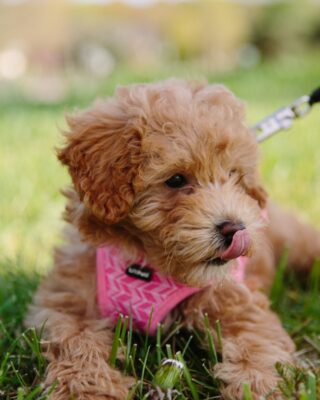
A charming blend of the Maltese and Toy Poodle breeds, these tiny dogs capture hearts with their irresistible looks and endearing personalities. As a cross between two purebred dogs, Maltipoos, also known as Maltipoo full grown, embody the best traits of their parent breeds.
Their small size and toy breed status make them perfect for individuals and families seeking a compact canine companion. With origins in the Maltese Poodle mix, Maltipoos are adored for their affectionate nature and suitability for apartment living. Let’s explore the characteristics and care of these beloved Maltipoo dogs.
Maltipoo History and Origin
The Maltipoo, a beloved small dog breed, has a fascinating history that traces back to the United States, where it was first bred. The exact year of its origin is not widely documented, but it is believed to have started gaining popularity in the 1990s. This adorable breed is a result of crossing the Maltese, known for its elegance and charm, with the Toy Poodle, prized for its intelligence and hypoallergenic coat.
While the Maltipoo is not recognized by major kennel clubs like the AKC (American Kennel Club) as a standard breed, it is highly sought after for its affectionate nature and suitability for apartment living. Clubs dedicated to Toy-sized breeds often celebrate the Maltipoo for its loving disposition, adorable appearance, and being active dogs.
Teacup Maltipoo puppies are particularly cherished for their tiny size and endearing qualities. Maltipoo puppy is popular among small dog enthusiasts and those seeking toy breeds, thanks to its compact size and friendly temperament.
Description of the Breed
The Maltipoo is a charming and affectionate breed, known for its small size and friendly nature. This delightful puppy is a cross between the Maltese and a Toy or Miniature Poodle, inheriting the best traits from both parent breeds.
Maltipoos are considered tiny dogs, with teacup Maltipoos being even smaller and highly sought after for their miniature size. They typically weigh between 5 to 20 pounds, with the influence of the mini Poodle determining the maximum weight. One of their most appealing features is their hypoallergenic coat, which sheds minimally and is suitable for allergy sufferers.
Maltipoos fall within a height range of 8 to 14 inches, making them well-suited for apartment living and excellent companions for those seeking a small, affectionate dog.
Popularity and Demand
The Maltipoo puppy has surged in popularity in recent years, particularly among those seeking small or tiny dogs. Their rise in demand can be attributed to their adorable appearance, compact size, and friendly temperament.
As more people seek smaller dog breeds that are well-suited for apartment living, the Maltipoo has become a sought-after choice. Additionally, their hypoallergenic coat makes them a preferred option for individuals with allergies. The Maltipoo’s popularity is also fueled by their reputation for being affectionate, social, and relatively easy to train, making them excellent companions for individuals and families alike.

Understanding Maltipoo Growth Stages
Newborn to Puppyhood
Understanding the growth stages of a Maltipoo puppy, a small dog breed, is essential for ensuring their health and development. From newborn to puppyhood, Maltipoos undergo significant changes. At birth, they are tiny, blind, and completely dependent on their mother for nourishment and care.
As they grow, their development progresses rapidly, with their eyes and ears opening, and they begin to explore their surroundings. Proper nutrition and care are crucial during this stage to support their growth and development.
Maltipoos are known for their hypoallergenic coats, which require regular grooming to maintain their health and appearance. Understanding these growth stages helps owners provide the best care for their Maltipoo puppy as they transition from newborns to playful, energetic puppies.
Adolescence
Understanding the adolescence stage of a Maltipoo puppy, a small dog breed, is crucial for their overall development and well-being. During this period, typically between six months to two years of age, Maltipoos undergo significant physical and behavioral changes.
They may experience a growth spurt, where they gain weight and increase in height. Their coat also continues to develop, requiring regular grooming to prevent matting and maintain its hypoallergenic qualities. Additionally, Maltipoos may exhibit typical teenage behavior, such as testing boundaries and being more independent.
Providing consistent training and socialization during this stage is important to ensure they grow into well-behaved adult dogs. Understanding and addressing the challenges of adolescence can help owners navigate this stage successfully and ensure their Maltipoo grows into a happy, healthy companion.
Adulthood
Understanding the adulthood stage of a Maltipoo, a small dog breed, is important for providing them with the proper care and attention they need. Generally, Maltipoos reach adulthood around one to two years of age, although this can vary. At this stage, they have reached their full size and weight, typically weighing between 5 to 20 pounds.
Their hypoallergenic coats are fully developed and require regular grooming to prevent matting and maintain their quality. Adult Maltipoos are known for their friendly and affectionate nature, making them great companions for individuals and families. Providing them with a balanced diet, regular exercise, and mental stimulation is essential for their overall health and well-being.
Understanding the needs of adult Maltipoos, also known as Maltipoo full grown, can help ensure they lead happy and healthy lives as beloved family pets.
Senior Years
Understanding the senior years of small dogs like the Maltipoo is crucial for their well-being and comfort. Typically, Maltipoos enter their senior stage around 7 to 10 years of age, though individual dogs may vary. During this time, they may experience physical changes such as reduced mobility, arthritis, or dental issues.
Additionally, their energy levels may decrease, and they may require a diet tailored to senior dogs to maintain optimal health. Regular veterinary check-ups become even more important to monitor for age-related conditions and ensure they are receiving appropriate care.
Providing a comfortable and safe environment, along with plenty of love and attention, can help senior Maltipoos enjoy their golden years to the fullest.
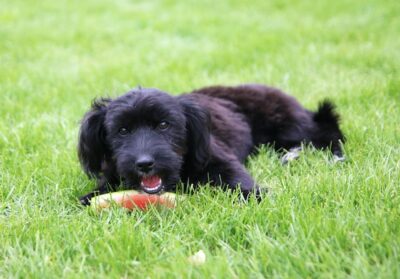
Physical Characteristics of a Full-Grown Maltipoo
Maltipoo Dog’s Weight and Size
The size and weight of a full-grown Maltipoo, an adult dog, can vary based on several factors including the size of the parent breeds and individual genetics. Maltipoos typically reach their full size and weight around one to two years of age. On average, they weigh between 5 to 20 pounds, with the maximum weight often influenced by the size of the Miniature Poodle parent.
Monitoring a Maltipoo puppy’s weight as they grow is important to ensure they are gaining weight steadily and not becoming underweight or overweight. An adult Maltipoo should have a well-defined waist when viewed from above, indicating a healthy weight.
Regular exercise and a balanced diet tailored to their size and activity level can help maintain a Maltipoo’s weight within a healthy range. Understanding the physical characteristics of a full-grown Maltipoo can help owners provide the best care for their adult dog.
Coat Color and Texture
The coat color and texture of a full-grown Maltipoo, often resembling a teddy bear, can vary widely and are influenced by the coat colors of the parent breeds. Maltipoos can come in a range of coat colors, including white, cream, apricot, gold, brown, black, and combinations of these colors.
Their coat texture is typically soft and fluffy, akin to the plushness of a teddy bear, with some Maltipoos having slightly wavy or curly coats. Regular grooming, such as brushing to prevent matting and regular baths to keep the coat clean, is important for maintaining the health and appearance of their coat. Understanding the coat color and texture of a full-grown Maltipoo can help owners provide appropriate grooming and care for their maltipoo puppy, ensuring a healthy and happy companion.
Facial Features
The facial features of a full-grown Maltipoo are often a charming blend of the Maltese and Poodle parent breeds. They typically have a small, rounded head with expressive eyes that can range in color from dark brown to hazel. Their ears are floppy and feathered, hanging down close to their cheeks.
Maltipoos are known for their adorable button noses and often have a black or brown nose, although it can vary depending on their coat color. They have a characteristic muzzle that is medium in length, neither too short nor too long, giving them a sweet and friendly expression. Overall, the facial features of a full-grown Maltipoo contribute to their endearing and lovable appearance, making them a favorite among dog enthusiasts.
Tail and Body Shape
The tail and body shape of a full-grown Maltipoo are influenced by its adult size, which can vary based on the size of the Maltese and Poodle parents. Generally, Maltipoos have a compact body with a well-proportioned build. Their tail is often medium in length, carried jauntily and adding to their overall charm.
The body shape of a Maltipoo is typically well-balanced, with a level back and a slight tuck-up at the abdomen. They are bred to have a sturdy yet elegant appearance, combining the grace of the Maltese with the athleticism of the Poodle. Understanding the tail and body shape of a full-grown Maltipoo can help owners appreciate and care for their beloved furry companions.
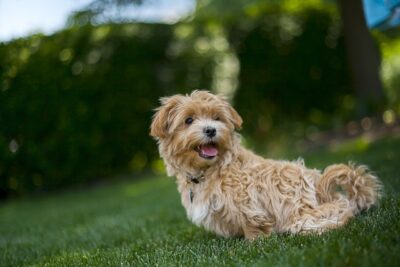
Behavioral Traits of Mature Maltipoos
Temperament
Mature Maltipoos are known for their delightful temperament, characterized by good manners and a gentle disposition. They are highly sensitive dogs, often attuned to their owner’s emotions and environment.
This sensitivity can make them responsive to training and eager to please, making them relatively easy to train. However, it also means they can be affected by changes in their surroundings, so it’s important to introduce them slowly to new environments to prevent behavioral issues.
Maltipoos are generally friendly and affectionate, enjoying the company of their family members and forming strong bonds with their owners. They are often described as being playful and lively, yet they also appreciate cuddle time and relaxation. Understanding the behavioral traits of mature Maltipoos can help owners provide the right environment and training to ensure they thrive and continue to be loving companions.
Energy Levels
Mature Maltipoos exhibit varying energy levels, often influenced by factors such as genetics, age, and individual temperament. While some Maltipoos are quite active and playful, others may be more laid-back and calm. They tend to be highly sensitive to their environment and the energy of those around them, including other pets like cats.
Maltipoos are known for their friendly and sociable nature, often getting along well with other pets in the household. However, they can be prone to separation anxiety if left alone for long periods, preferring the company of their family members or other pets. Providing them with plenty of exercise, mental stimulation, and companionship can help manage their energy levels and ensure they remain happy and well-adjusted pets.
Trainability
Mature Maltipoos are generally highly trainable dogs, known for their intelligence and eagerness to please their owners. They respond well to positive reinforcement techniques, such as praise and treats, making them relatively easy to train. Crate training is often effective with Maltipoos, as they tend to view their crate as a safe and comfortable space.
Consistent training sessions are key to successfully teaching commands and behaviors to a Maltipoo. They are prone to boredom, so keeping training sessions short, engaging, and varied can help maintain their interest and focus. Some Maltipoos may benefit from additional training, particularly in areas such as socialization or overcoming fearfulness. Understanding the trainability of mature Maltipoos can help owners establish a strong bond with their furry companions through effective training techniques.
Socialization and Interaction
Mature Maltipoos are typically social and enjoy interacting with people and other pets. Early socialization is important to ensure they develop good manners and positive behaviors. They tend to be friendly and affectionate, forming strong bonds with their family members.
Maltipoos are often good with children and other pets when properly socialized from a young age. They enjoy being part of the family and may become anxious if left alone for long periods. Regular interaction and playtime are important for their mental and physical well-being. Understanding the socialization and interaction needs of mature Maltipoos can help owners provide them with a fulfilling and happy life.

Health and Care for Maltipoo Full Grown
Common Health Issues
Adult Maltipoos are generally healthy dogs, but like all breeds, they can be prone to certain health issues. When getting a Maltipoo puppy, it’s important to choose a reputable breeder who screens for potential health risks common to both parent breeds.
One common health concern for Maltipoos is dental problems, so regular dental care is important to prevent issues like tartar buildup and gum disease. Another issue to watch for is excess weight, which can lead to various health problems. Monitoring your dog’s weight, especially for teacup Maltipoos, and providing a balanced diet and regular exercise can help prevent obesity.
Maltipoos are adaptable and can thrive in various environments, but it’s essential to provide them with regular veterinary care and a healthy lifestyle to ensure they stay happy and healthy. Regular check-ups with a veterinarian can help catch any potential health issues early, ensuring your Maltipoo stays in optimal health for years to come.
Grooming Needs
The grooming needs of adult Maltipoos can vary depending on their coat type and length. Regular grooming is important to keep their coat free of tangles and matting. Maltipoos are prone to tear stains, so gently cleaning around their eyes regularly can help prevent staining.
As a general rule, Maltipoos should be brushed at least a few times a week to prevent matting and keep their coat in good condition. Regular baths, about once a month or as needed, can help keep their coat clean and fresh.
Trimming their nails regularly, checking their ears for dirt or infections, and brushing their teeth can also contribute to their overall grooming needs. Understanding the grooming needs of adult Maltipoos can help owners keep them looking and feeling their best.
Exercise Requirements
Exercise is important for adult Maltipoos, especially since they are small dogs that can gain weight easily if not properly exercised. While they don’t require as much exercise as larger dogs, most Maltipoos still need daily walks and playtime to stay healthy and happy.
Adult Maltipoos are generally small in size, so their exercise needs can be met with short walks and indoor play. However, it’s important not to over-exercise them, especially when they are still puppies and their bones are still developing. Many owners find that regular walks and play sessions are sufficient to meet their Maltipoo’s exercise needs.
Some Maltipoos may benefit from additional training or activities to keep them mentally stimulated. Providing opportunities for socialization and interaction with other dogs can also help keep them active and engaged. Understanding the exercise requirements of adult Maltipoos can help owners provide them with the right amount of physical activity to maintain their health and well-being.

Dietary Considerations
Diet plays a crucial role in the health and well-being of adult Maltipoos. It’s important to provide them with a balanced diet that meets their nutritional needs. Many owners find that feeding their Maltipoo a high-quality dry dog food works well, but it’s important to choose a food that is appropriate for their size, age, and activity level.
Some Maltipoos may benefit from supplements like fish oil, which can help promote healthy skin and coat. However, it’s essential to consult with a veterinarian before adding any supplements to your dog’s diet, as they can interact with medications or have side effects.
Feeding your Maltipoo the right amount of food is also crucial, as overfeeding can lead to obesity and other health issues. Monitoring your dog’s weight and adjusting their diet as needed can help prevent weight gain and keep them healthy. Understanding the dietary considerations for adult Maltipoos can help owners provide them with the nutrition they need to thrive.
Lifestyle with a Maltipoo Full Grown
Living Arrangements
Living arrangements for a Maltipoo full grown can vary based on the preferences of their human family members and the needs of the dog. Maltipoos are adaptable and can thrive in various living environments, including apartments, houses, and urban or rural settings.
While they are generally small dogs, Maltipoos can be prone to excessive barking, so it’s important to provide them with proper training and socialization to prevent this behavior. They typically get along well with other dogs and pets, especially if they are raised together from a young age.
When getting a Maltipoo, it’s important to choose a reputable breeder who prioritizes the health and well-being of their pups. Additionally, providing regular exercise, mental stimulation, and affection can help ensure that your Maltipoo leads a happy and fulfilling life as a cherished member of your family.
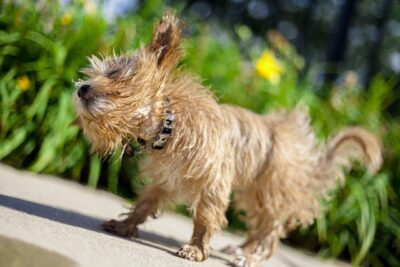
Exercise and Playtime
Exercise and playtime are important aspects of caring for a Maltipoo full grown. While they are small dogs, Maltipoos still need regular exercise to stay healthy and happy. Daily walks and play sessions can help them burn off excess energy and prevent behavioral issues.
Maltipoos are known for their playful nature, so providing them with a variety of toys can help keep them entertained. Interactive toys and puzzle games can also help stimulate their minds and prevent boredom.
It’s important to tailor your Maltipoo’s exercise routine to their individual needs and energy levels. Some Maltipoos may be content with a short walk around the block, while others may require more vigorous exercise. Understanding your Maltipoo’s exercise needs can help ensure they get the right amount of physical activity to stay healthy and happy.
Traveling with Your Maltipoo
Traveling with your Maltipoo full grown can be a fun and rewarding experience. Maltipoos are typically small enough to travel comfortably in a carrier or small travel crate. It’s important to ensure your Maltipoo is properly secured in the car while traveling, either in a carrier or with a pet seatbelt, to keep them safe.
Bringing along familiar items such as their favorite toys, bedding, and food can help keep your Maltipoo comfortable and reduce stress while traveling. Additionally, planning regular stops for potty breaks and exercise can help keep your Maltipoo happy and healthy during your travels.
Integrating into Your Family Routine
Integrating a Maltipoo full grown into your family routine can be a smooth process with some careful planning. Establishing a consistent daily schedule for feeding, exercise, and playtime can help your Maltipoo adjust and feel secure.
Incorporating your Maltipoo into family activities, such as walks, outings, and relaxation time, can strengthen the bond between you and your furry companion. Providing them with a designated space for rest and relaxation, such as a comfortable bed or crate, can give them a sense of belonging in your home.
Consistent training and positive reinforcement can help reinforce good behavior and manners, ensuring that your Maltipoo becomes a cherished and well-integrated member of your family.
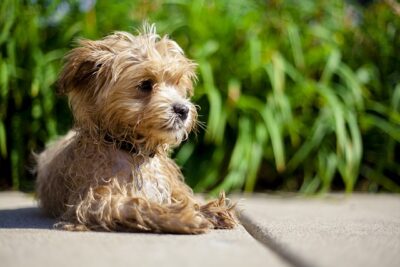
Common Myths and Misconceptions About Maltipoo Full Grown
Allergies and Hypoallergenic Myth
One common myth about Maltipoo full grown is that they are completely hypoallergenic. While they may produce fewer allergens than most dogs due to their coat type, no dog breed is entirely hypoallergenic.
Another misconception is that Maltipoos will stay small like a pup throughout their lives. While they are generally small dogs, their size as adults can vary, especially if they have a larger dog as one of their parent breeds. Understanding these myths and misconceptions can help potential owners make informed decisions about adding a Maltipoo to their family.
Maltipoos as Lap Dogs Only
One common misconception about Maltipoo full grown is that they are only suitable as lap dogs and are not active or playful. While Maltipoos do enjoy cuddling and being close to their human family members, they are also energetic and playful dogs that enjoy activities like walks, playtime, and training.
Maltipoos are adaptable and can thrive in various living environments, including apartments, houses, and urban or rural settings. They are known for their friendly and sociable nature, getting along well with people of all ages and other pets. Understanding the true nature of Maltipoos can help potential owners provide them with the care and environment they need to lead happy and fulfilling lives.
Intelligence and Trainability
One common myth about Maltipoo full grown is that they are not intelligent or trainable due to their small size or mixed breed status. However, Maltipoos are known for their intelligence and can be quite trainable with the right approach.
Like all dogs, Maltipoos respond well to positive reinforcement techniques and consistency in training. They are eager to please their owners and can learn a variety of commands and tricks. Understanding the intelligence and trainability of Maltipoos can help owners develop a strong bond with their furry companions through effective training methods.
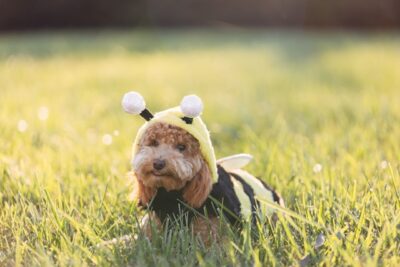
Conclusion: The Timeless Appeal of Maltipoo Full Grown
In conclusion, the Maltipoo is a delightful and charming breed that combines the best traits of the Maltese and Toy Poodle. These small dogs, especially when considering a Maltipoo full grown, are known for their affectionate nature, playful personality, and adaptability to various living environments. As a crossbreed, Maltipoos come in a range of coat colors and textures, adding to their appeal.
Their small size and friendly temperament make them ideal companions for individuals and families alike. Maltipoos are highly trainable and intelligent, making them relatively easy to train and a joy to have around. Their hypoallergenic coat and minimal shedding make them suitable for allergy sufferers.
Benefits of Owning a Maltipoo Full Grown
Owning a full-grown Maltipoo comes with several benefits, especially when considering a Maltipoo full grown. These dogs are known for their loving and affectionate nature, forming strong bonds with their owners. They are also adaptable and can thrive in various living environments, including apartments and houses.
Maltipoos are relatively low maintenance in terms of grooming, thanks to their hypoallergenic coat. Regular grooming, such as brushing and baths, can help maintain their coat’s health and appearance. Their small size makes them easy to travel with and suitable for individuals with limited space.
Final Thoughts on the Maltipoo Full Grown
The Maltipoo is a wonderful breed known for bringing joy and companionship to many households. Their friendly nature, intelligence, and adaptability make them excellent family pets. Whether you’re looking for a small, playful companion or a hypoallergenic dog, the Maltipoo is a breed worth considering, especially when looking at a Maltipoo full grown.
Understanding their needs and providing them with love, care, and proper training can help ensure that your Maltipoo lives a happy and healthy life as a beloved member of your family. If you’re interested in bringing a Maltipoo into your home, we offer Maltipoo puppies for sale in Georgia and surrounding areas.
From day one, we value and adore each and every charming canine in our care. From regular health checks to socialization and affectionate interaction, we guarantee that the puppy you receive will meet your expectations. Visit our website to explore available puppies.
Frequently Asked Questions (FAQs): Maltipoo Full Grown
- What is the size of a Maltipoo full grown?
- Full-grown Maltipoos can vary in size, with most weighing between 5 to 20 pounds and standing 8 to 14 inches tall. Teacup Maltipoos are even smaller, typically weighing less than 5 pounds.
- Do Maltipoos bark a lot?
- Maltipoos are not known to be excessive barkers, but like all dogs, they may bark in certain situations, such as when they are excited or feel threatened.
- Are Maltipoos prone to excess weight?
- Maltipoos can be prone to gaining excess weight if not given proper exercise and a balanced diet. It’s important to monitor their weight and provide them with regular exercise to maintain a healthy weight.
- Are Maltipoos good with other dogs?
- Maltipoos are generally friendly and sociable dogs that can get along well with other dogs, especially if they are properly socialized from a young age.
- Do Maltipoos have dental problems?
- Like all dogs, Maltipoos can be prone to dental problems such as tartar buildup and gum disease. Regular dental care, including brushing their teeth and providing dental treats, can help prevent these issues.
- What is the temperament of a full-grown Maltipoo?
- Full-grown Maltipoos are known for their friendly and affectionate nature. They are often described as playful, loving, and good-natured dogs that form strong bonds with their owners.
- Are Maltipoos suitable for first-time dog owners?
- Yes, Maltipoos can be a good choice for first-time dog owners due to their friendly nature, adaptability, and relatively low maintenance grooming needs.
- How big do teacup Maltipoos get?
- Teacup Maltipoos are the smallest size of Maltipoos, typically weighing less than 5 pounds and standing less than 8 inches tall at the shoulder.
- Are doodle Maltipoos a specific type of Maltipoo?
- Doodle Maltipoos are a cross between a Maltipoo and a Poodle, resulting in a dog that may have a more curly or wavy coat like a Poodle.
- What should I look for in a Maltipoo breeder?
- When choosing a Maltipoo breeder, look for someone who prioritizes the health and well-being of their puppies. A reputable breeder will provide health certifications for the parents, offer a clean and safe environment for the puppies, and be willing to answer any questions you may have about the breed.




